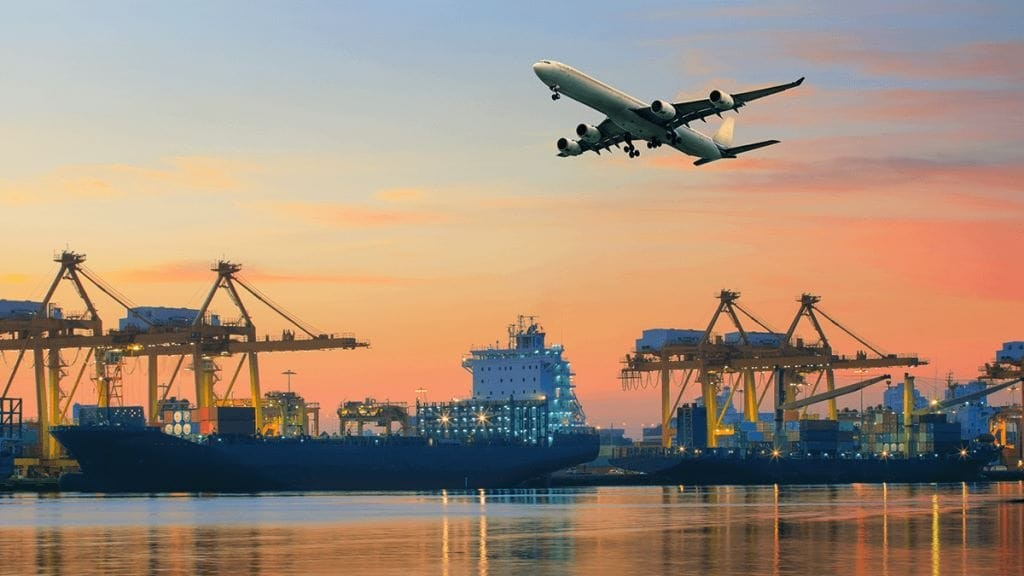Strategic logistics: navigating China-Luxembourg shipping for optimal business space
For businesses eyeing Luxembourg as a strategic hub, a deep understanding of international shipping costs, particularly from key manufacturing regions like China, is not just about logistics – it's a critical factor in determining your operational footprint.
The efficiency and cost-effectiveness of your supply chain directly influence your need for and optimal location of office and warehouse space, impacting everything from inventory management to your overall profitability.
Understanding key transport modes and their impact on your real estate needs
The choice of shipping method from China to Luxembourg has profound implications for transit times, costs, and consequently, your inventory strategy and warehouse requirements.
Sea freight: the cost-effective option for bulk shipments
Sea freight is typically the most economical choice for large volumes and non-urgent goods. While transit times can range from 30 to 50 days or more, its low cost per unit makes it ideal for maintaining a stable inventory. Businesses relying on sea freight often require larger warehouse facilities in Luxembourg to accommodate longer lead times and substantial stock levels, acting as a buffer against supply chain variability.
Rail freight: a balanced solution for speed and cost
Offering a middle ground, rail freight from China to Luxembourg usually takes between 15 to 25 days. It's faster than sea freight and more affordable than air freight, providing a good balance for many businesses. This mode can support a more agile inventory approach, potentially allowing for slightly smaller or more efficiently managed warehouse spaces compared to purely sea-based supply chains, as goods arrive more predictably.
Air freight: for urgent or high-value goods
Air freight is the fastest option, with transit times typically ranging from 3 to 7 days. While significantly more expensive, it's indispensable for high-value, time-sensitive, or perishable goods. Businesses utilizing air freight may need less extensive warehouse space for these specific items, perhaps opting for smaller, strategically located distribution points, or even just cross-docking facilities to minimize storage costs, focusing more on rapid turnover.
Key factors influencing your shipping costs (and space requirements)
Beyond the mode of transport, several variables directly impact shipping expenses, which in turn affect your overall logistics strategy and real estate decisions.
Weight and volume
The heavier or bulkier your shipment, the higher the cost. Optimizing packaging to reduce both weight and volume can lead to significant savings, and also allows for more efficient use of warehouse space by maximizing storage density.
Seasonality
Shipping rates fluctuate based on demand, with peak seasons (e.g., before major holidays like Chinese New Year or Christmas) seeing higher prices and potential delays. Planning for these periods might necessitate holding more buffer stock, increasing temporary or permanent warehouse space needs.
Customs clearance difficulty
Complex or poorly managed customs processes can lead to delays, demurrage, and additional fees. Efficient customs clearance is crucial for maintaining a smooth flow of goods into your Luxembourg-based warehouse, preventing bottlenecks that can tie up valuable space or incur penalties.
Understanding taxes and import duties in Luxembourg (EU member)
As a member of the European Union, Luxembourg applies EU customs regulations, including VAT (typically 17% standard rate) and specific import duties based on the product's Harmonized System (HS) code. These charges are levied on the CIF (Cost, Insurance, Freight) value of the goods and represent a substantial additional cost that must be factored into your landed cost of goods. Failing to account for these can severely impact your profitability and budgeting for overall operational costs, including your real estate footprint.
Strategies to reduce logistics costs and optimize your space
Proactive strategies can help mitigate shipping expenses, allowing for more efficient use of your office and warehouse investments in Luxembourg.
Consolidation and optimization
Utilizing Full Container Load (FCL) for large volumes or Less than Container Load (LCL) for smaller shipments, combined with smart cargo consolidation, can significantly reduce per-unit shipping costs. This directly translates to more predictable arrival schedules and better management of your warehouse receiving and dispatch areas.
Strategic planning and partnerships
Working with experienced freight forwarders who understand both Chinese export regulations and EU import requirements can streamline the entire process, minimize delays, and provide cost-effective routing. Their expertise can help you avoid common pitfalls that lead to unforeseen expenses or require more reactive (and costly) storage solutions.
Efficient documentation and compliance
Ensuring all necessary documents—such as commercial invoices, packing lists, bills of lading/air waybills, certificates of origin, and product-specific licenses—are accurate and complete is vital for smooth customs clearance. Delays due to incorrect paperwork can result in goods being held, incurring storage fees and disrupting your inventory flow, potentially overloading your available warehouse space.
Conclusion: strategic decisions for your Luxembourg business
The complex interplay of shipping modes, costs, and regulatory compliance from China to Luxembourg directly shapes the logistical backbone of your business. By thoroughly understanding these dynamics, you can make informed decisions about your supply chain, optimize your inventory levels, and critically, determine the most suitable and cost-effective office and warehouse space for your operations in Luxembourg, ensuring long-term success and efficiency.
Source: ubestshipping.com







